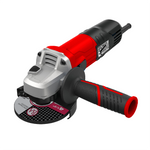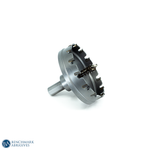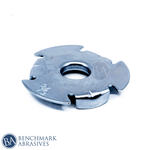
Single Point Cutting Tool vs Multi-Point Cutting Tool

The major difference between single and multi-point cutting tools is that single-point cutting tools have only one main cutting edge. In contrast, multi-point cutting tools have multiple cutting edges.
A cutting tool can have one or more main cutting edges. Based on cutting edge, cutting tools are classified into three main categories: single-point, double-point, and multi-point cutting tools.
What are single-point and multipoint cutting tools?
A single-point cutting tool is defined as a tool with only one main cutting edge. Similarly, double-point cutting tools have two cutting edges, and multi-point cutting tools have two or more main cutting edges.
The number of cutting edges in metal or hole cutting tools has a significant impact on several factors, including material removal rate (MRR), chip load, and tool cost.
In the machining process, a single-point cutting tool is used for cutting, shaping, boring, and planning because a single cutting edge removes or cuts the whole material in one pass. A double-point cutting tool, on the other hand, uses both cutting edges equally to remove material in a single pass. As a result, the chip load is reduced on both cutting edges.
A multi-point cutting tool has two to hundreds of cutting edges (for example, TCT blades used as wood cutting tools). Double or multi-point cutting tools are primarily used for drilling, milling, reaming, and knurling applications.
Now, in the next step, we will discuss important similarities and differences between single-point cutting tools and multi-point cutting tools.
Similarities Between Single Point and Multi-Point Cutting Tools
-
Both single-point and multi-point cutting tools are used for metal cutting and excess material removal. Multi-point cutters are often regarded as aluminum cutting tools.
-
Both are utilized in traditional machining processes. However, different machining methods require different cutting tools.
-
Single-point and multi-point cutters both require sharp cutting edges. But, cutting-edge numbers are not similar.
-
For both types of metal cutting tools, the geometry and material of the workpiece are important factors.
Difference Between Single Point and Multi-point Cutting Tool
The following are the important differences in these cutting tools:
|
Single Point Cutting Tool |
Multi-point Cutting Tool |
|
These tools have only one main cutting edge. |
These tools have two or more main cutting edges |
|
The cutting process stops completely if a cutting edge gets damaged. |
The cutting process does not stop if any single cutting edge gets damaged. |
|
The cutting tool comes into contact with the workpiece with only one edge. |
The cutting tool comes into contact with the workpiece with one or more edges. |
|
These tools are employed for the tasks of facing, turning, drilling, and shaping. |
These tools perform drilling, milling, reaming, turning & more. |
|
Single-point cutting tools are mainly utilized with a lathe, planer, shaper, or slotter machines. |
Multi-point cutting tools are utilized for grinding, milling, or other heavy machinery. |
|
Fabrication and design are simple. |
Fabrication and design are difficult. |
|
For a single pass, the complete chip load is borne by a single cutting edge. |
Here, the complete chip load is distributed equally across all cutting edges. |
|
Provide a good surface finish with less accuracy. |
Provide an excellent surface finish with high accuracy. |
|
This tool can be made from the grinder machine. |
Multi-point tools can not be made from only grinder machines. |
|
Tools for manufacturing and designing take less time |
Tools manufacturing and designing take more time |
|
Single point cutting tools cost less. |
Multi-point cutting tools cost high. |
|
High cutting temperature. |
Low cutting temperature. |
|
Single-point cutting tools have a short life span. |
Multi-point cutting tools have a long life span. |
|
Low material removal rate (MRR). |
High material removal rate (MRR). |
|
The single-point cutting tool wear rate is quite high. |
The multi-point tool wear rate is comparatively low. |
|
Examples of single-point cutting tools are-
|
Examples of multi-point cutting tools are-
|
Choosing between Single Point Cutting Tool vs Multi-Point Cutting Tool
Choosing between single-point and multi-point cutting tools is based on some of the considerations like the type of operation, the required finish, material removal rate, etc., which are given below:
-
Evaluating a machining process: evaluating a machining process is very crucial in choosing between single-point and multipoint cutting tools. It helps in selecting the best cutting tool designed for a particular task. It provides optimal and efficient results. Choose a single-point cutting tool if the process requires constant contact with the material and high precision. If the process requires high MRR and productivity, choose a multi-point cutting tool.
-
Type of material: Selecting the right tool is often influenced by the type of material being operated. Materials have several properties, such as toughness, hardness, and machinability. Harder materials usually require tools with high wear resistance. Due to multiple cutting edges sharing the load, multi-point tools sometimes offer increased wear resistance.
-
Single-point tools quickly get damaged if they are used on tough materials that are hard to machine. Multi-point tools, on the other hand, are used due to their intermittent contact.
-
Required finish: This also plays a significant role in deciding which tool to use. Fine surface finish can be achieved with the help of sharp cutting edges and slow feed rates, which can be easily achieved with single-point cutting tools.
-
Examine the necessary MRR: Selecting the right tool is also based on the required material removal rate (MRR). Multi-point tools are preferred if the MRR is high and also because of their ability to remove material quickly when compared to single-point tools.
Cutting through metal is not an easy task unless you have the right tool. So, what are the right tools to cut metal? Read to know the best metal-cutting tools.



































































